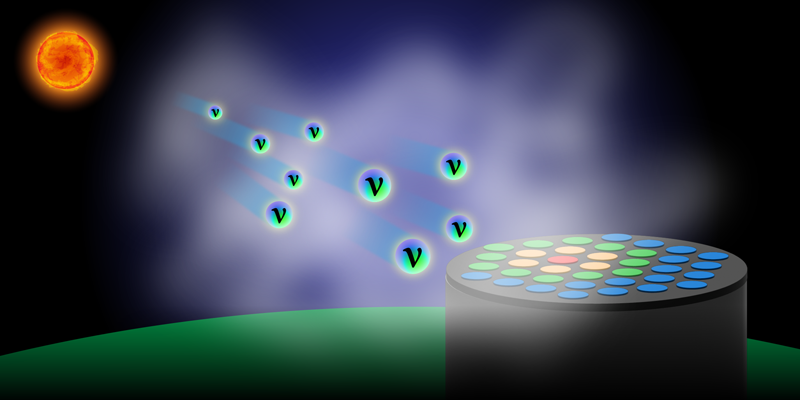Navigation auf uzh.ch
Navigation auf uzh.ch
The first measurement of solar 8B neutrinos via coherent elastic neutrino-nucleus scattering (CEνNS) in XENONnT has been published in Physical Review Letters.

The CEνNS process was measured for the first time with neutrinos from a natural source at a significance of 2.73σ. Results from the PandaX-4t experiment were published alongside. This marks the first glimpse of the so-called neutrino fog: As neutrinos interact in the same way as weakly interacting massive dark matter particles (WIMPs), the respective signals in a detector are indistinguishable.
Neutrinos are extremely light and weakly interacting particles within the Standard Model of particle physics. At energies of few to tens of megaelectronvolts they predominantly interact coherently with an entire atomic nucleus rather than with individual protons, neutrons or atomic electrons. Such neutrinos are abundant in Earth’s cosmic neighborhood, as they are emitted from the sun, are produced by cosmic ray bombardment of the atmosphere and remain as a diffuse background from supernovae throughout the history of the Milky Way. These three components constitute the neutrino fog for dark matter detection in which neutrinos might hide dark matter signals.
While solar neutrinos have lower energies than the other two components, their larger particle flux impinging on Earth makes them the first component to be detectable in experiments. However, a detection required lowering the energy threshold of the XENONnT, as even the highest energy solar 8B neutrinos only deposit few kiloelectronvolts of energy inside the detector. While a lower threshold could be achieved by allowing signals for analysis that were seen by fewer sensors inside the detector, this meant a large increase in unphysical background events. In order to reject such background events, the data analysis relied heavily on machine learning. This allowed to determine that out of 37 measured events, 26 events would originate from background while 11 events were attributed to CEνNS.
A lot of WIMP parameter space can still be probed before the atmospheric and diffuse supernova components start to pose a challenge for experiments. With future data, XENONnT and the upcoming DARWIN/XLZD experiment will venture down into the fog.
Local information: The group of Prof. Laura Baudis at the University of Zurich had major responsibilities in the XENONnT TPC design and assembly, in the installation, calibration and readout electronics of the 494 photosensors, and in the measurements of tiny radioactivity traces in detector materials. The group also has leading involvements in the data analysis and in Monte Carlo simulations of the expected TPC signals and backgrounds.